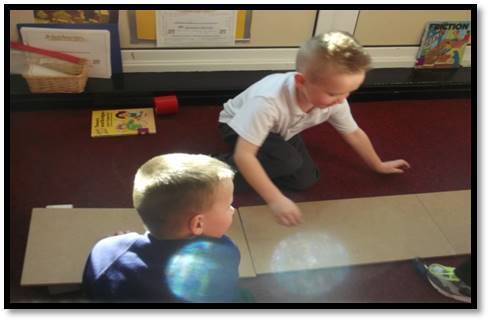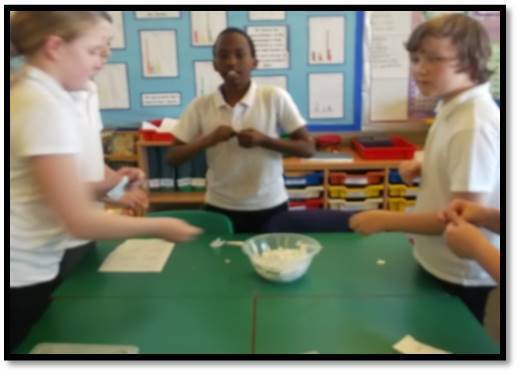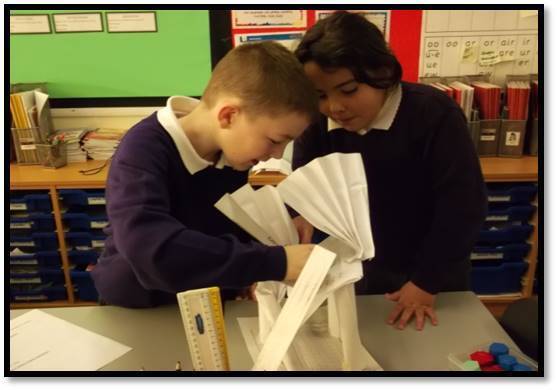Design and Technology
All pupils, from Foundation Stage to Y6, are encouraged through a variety of creative and practical activities, pupils should be taught the knowledge, understanding and skills needed to engage in an iterative process of designing and making. They should work in a range of relevant contexts
To master practical skills
In Design and Technology, it is very important that the pupils are given as many real life experiences as possible.
By the end of KS1 pupils should be able to :
- use the basic principles of a healthy and varied diet to prepare dishes
- understand where food comes from
By the end of KS2 pupils should be able to :
Understand the importance of correct storage and handling of ingredients
- Measure accurately and calculate ratios of ingredients to scale up or down from a recipe.
- Demonstrate a range of baking and cooking techniques.
- Create and refine recipes, including ingredients, methods, cooking times and temperatures.
Materials
- Cut materials with precision and refine the finish with appropriate tools
- Show an understanding of the qualities of materials to choose appropriate tools to cut and shape
Textiles
- Create objects that employ a seam allowance.
- Join textiles with a combination of stitching techniques
- Use the qualities of materials to create suitable visual and tactile effects in the decoration of textiles
Electrical and Electronics
- Create circuits using electronics kits that employ a number of components
To design, make, evaluate and improve
Pupils learn how to design purposeful, functional, appealing products for themselves and other users based on design criteria. To generate, develop, model and communicate their ideas through talking, drawing, templates, mock-ups and, where appropriate, information and communication technology.
Pupils should learn how to select from and use a range of tools and equipment to perform practical tasks [for example, cutting, shaping, joining and finishing] To select from and use a wide range of materials and components, including construction materials, textiles and ingredients, according to their characteristics.
Pupils should learn how to explore and evaluate a range of existing products and to evaluate their ideas and products against design criteria
In Design and Technology, it is very important that the pupils are given as many real life experiences as possible.
By the end of KS1 pupils should be able to :
- Design products that have a clear purpose and an intended user.
- Use software to design.
- Make products, refining the design as work progresses.
By the end of KS2 pupils should be able to :
Design with the user in mind, motivated by the service a product will offer (rather than simply for profit).
- Use prototypes, cross-sectional diagrams and computer aided designs to represent designs.
- Make products through stages of prototypes, making continual refinements.
- Ensure products have a high quality finish, using art skills where appropriate.
To take inspiration from design throughout history
In Design and Technology, our pupils will find out about how key events and individuals in design and technology have helped shape the world.
By the end of KS1 pupils should be able to :
- Explore objects and designs to identify likes and dislikes of the designs.
- Suggest improvements to existing designs.
- Explore how products have been created.
By the end of KS2 pupils should be able to :
- Combine elements of design from a range of inspirational designers throughout history, giving reasons for choices.
- Create innovative designs that improve upon existing products.
- Evaluate the design of products so as to suggest improvements to the user experience.
To gain technical knowledge
In Design and Technology, our pupils will find out about structures, mechanical systems, electrical systems and how to apply their understanding.
By the end of KS1 pupils should be able to :
- build structures, exploring how they can be made stronger, stiffer and more stable
- explore and use mechanisms [for example, levers, sliders, wheels and axles], in their products.
By the end of KS2 pupils should be able to :
apply their understanding of how to strengthen, stiffen and reinforce more complex structures
understand and use mechanical systems in their products [for example, gears, pulleys, cams, levers and linkages]
understand and use electrical systems in their products [for example, series circuits incorporating switches, bulbs, buzzers and motors]
apply their understanding of computing to program, monitor and control their products.
Key Documents
DT - Intent, Implementation and Impact Statement
.DT Implementation EYFS Reception
 |
 |
























